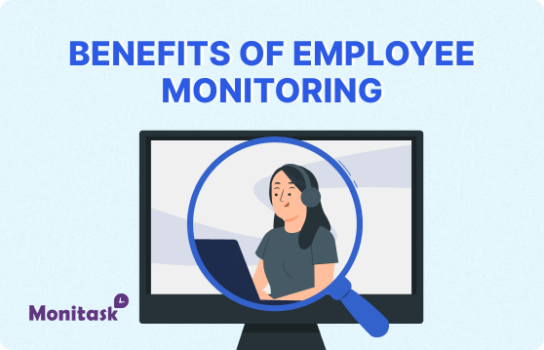Micromanaging Your Team: The Dangers of Micromanagement and How to Avoid Them

Micromanaging is one of the top reasons employees leave their jobs.
It tells your team that you don’t trust them, making them feel incompetent. Micromanaging is bad for your team, but it’s also bad for your business.
In this blog post, we will discuss the dangers of micromanaging and how to avoid it!

What is micromanaging
Micromanaging is when a manager is overly involved in the day-to-day tasks of their employees. This can include viewing and approving their work, giving employees constant feedback on the small details of their work, and setting strict deadlines.
When employees feel like they have no control over their day-to-day tasks, it can lead to them becoming disengaged and unproductive.
In the worst cases, micromanaging can even lead to employees leaving the company.
Micromanaging and its effects

“Never tell people how to do things. Tell them what to do, and they will surprise you with their ingenuity.” Former U.S. Army General George S. Patton.
Micromanaging can lead to a variety of negative outcomes across the organization. When managers are micromanaging their teams, employees feel unempowered, like they’re not trusted to do their jobs and not part of the company’s long-term strategy.
When managers have micromanaging tendencies, they’re also missing critical information that could help them and their team members produce higher-quality work and be more successful.
Real-world examples of this include a manager who reviews every blog post their marketing team writes, even though they have a content calendar that outlines their content strategy for the year.
A manager sets strict deadlines for their team and doesn’t allow team members to discuss and find the best solution for meeting those deadlines.
A manager who tells their team members exactly how to accomplish their tasks instead of giving them clear instructions and allowing them to find their solutions to the tasks at hand is micromanaging.
Maximize productivity of your business
Track employee productivity and simplify work with them
Why Micromanaging Employees is a Bad Idea
There are a few reasons why micromanaging employees is a terrible idea.
It’s challenging to be creative and innovative when you have no autonomy.
Plus, your employees miss out on important feedback that could help them improve their work and be more successful.
Why Micromanagement Makes Employees Feel Undervalued

When managers are constantly reviewing the little details of their employees’ work and micro-managing them, they say they don’t trust or value their employees’ work.
This can make employees feel unvalued, which will make it even harder for them to be engaged, productive, and innovative. When you micromanage your employees, they’re not only less effective, but they’re also less creative.
This happens because there’s less room for employees to be creative in the first place when you’re micro-managing them. When you constantly review the details of your employees’ work and micro-manage them, you’re also making them feel like their work isn’t good enough. This can make employees feel unvalued.
Micromanagement Means Employees Can’t Own Their Responsibilities
When you micromanage your employees, you’re taking away their opportunities to grow and be successful. You’re also taking away their opportunities to own their responsibilities and feel like they’re contributing to their team in a meaningful way.
When you’re constantly micromanaging your employees, it’s harder for them to be successful and feel like they’re contributing to their team in a meaningful way. They don’t have the autonomy or space needed to succeed.
When you micromanage your employees, you’re also taking away their opportunities to own their responsibilities. When you’re constantly reviewing the details of your employees’ work and micro-managing them, you’re taking away their autonomy to hold their responsibilities.
Micromanagement Hurts Employee Retention

When you micromanage your employees, you create a culture of fear and anxiety, leading to employees leaving the company.
When you constantly review the details of your employees’ work and micro-manage them, you’re sending the message that their work isn’t good enough. A culture of fear and anxiety can make employees feel under constant scrutiny, which can be incredibly demotivating and make employees feel like they don’t belong. When this happens, they’re more likely to leave the company.
Communication Problem
When you micromanage your employees, you come across as if you don’t trust them or value their work. You’re also not giving them the autonomy they need to be successful.
This can make employees feel unempowered and not valued, making it harder for them to be successful and feel like they’re contributing to the company.
However, the real problem is not micromanagement, it is the lack of clear communication.
When you communicate with your employees, you let them know what you expect them to achieve and how you want them to get there. When you share your expectations clearly, you also give your employees the autonomy they need to be successful.
Understand the difference between micromanaging and providing feedback
Micromanaging is when a manager oversees and controls every aspect of an employee’s work, whereas providing feedback offers suggestions to help an employee improve their work. Micromanaging can stunt an employee’s growth and make them feel uncomfortable or incompetent, while giving feedback can help employees learn and grow.
Micromanaging can also make employees feel undermined, making it even harder for them to produce quality work with consistent timing.
The critical point of feedback is to offer suggestions to help an employee improve their work. Feedback should be given constructively and should not be used to micromanage employees.
Realize that micromanagement can stunt your team’s growth

If you’re a manager, it’s essential to be aware of your management style and how it might be affecting your team. One way to unintentionally stunt your team’s growth is through micromanagement.
Micromanagement is a management style in which the manager closely controls and monitors employees’ work. This can be counterproductive for a few reasons.
- Micromanagement can lead to frustration and resentment among team members, who may feel that they are not trusted to do their jobs.
- It can prevent team members from developing new skills and taking on more responsibility, as they are always reliant on the manager for approval.
- Micromanagement can create an environment of fear, as team members may be afraid to make mistakes.
If you tend to micromanage your team, it’s essential to step back and give employees more autonomy. Doing so will create a more positive environment and allow your team to develop and grow.
Allow your team to make mistakes – it’s how they learn.
A workplace culture that is open to employees making mistakes can benefit for several reasons.
- It allows employees to feel comfortable taking risks and trying new things. This can lead to increased creativity and innovation.
- Making mistakes can help employees learn and do their jobs better.
- It builds trust between employees and management. Employees feel more comfortable sharing new ideas and asking for help when they trust their managers. Managers who allow employees to make mistakes create an environment where employees feel safe to take risks.
These factors can all contribute to a more successful and happier environment at work.
In any workplace, it is essential that employees feel comfortable making mistakes. After all, through trial and error, we learn and grow. If employees are afraid to make mistakes, they will be less likely to take risks, try new things, or step outside their comfort zones.
As a result, workplace culture will suffer, and innovation will be stifled. Ensure that your team does not make careless mistakes.
Mistakes should be seen as learning opportunities, not a cause for punishment.
When employees feel supported in their efforts to improve and grow, they will be more likely to take risks necessary for true innovation.
Trust your team to do their jobs effectively

As a team leader, it’s essential to trust your team members to do their jobs effectively. You can’t personally control everything, and if you try to micromanage every aspect of the team’s work, you’ll only create more problems.
Let your team members take ownership of their projects and see them through to completion. This doesn’t mean that you should blindly accept everything they do – you should still provide guidance and feedback when necessary.
But by trusting your team to do their jobs, you can create an environment where everyone can thrive.
Step back and allow them to take ownership of their work
One of the most critical leadership styles is to step back and allow your team to take ownership of their work. This saves you time spent overseeing their progress and builds trust and responsibility within the team.
Allowing your team members to take ownership of their work demonstrates that you have faith in their abilities and are willing to give them the autonomy to make decisions.
This leadership style will empower your employees, but it will also free up your time so that you can focus on other tasks. If you trust your employees to do their jobs, they will be more likely to work hard and take on leadership roles.
In addition, you will be able to spend more time working on strategic tasks that require extreme attention. If you want your employees to do their best work, sometimes you need to step back and let them take the lead. This way they can figure out what works best for them and for the company.
When combined with regular feedback and support, this leadership style can help to build a strong and cohesive team.
Observe how they work and provide feedback when necessary

As a manager, providing your team with the proper supervision is essential. You want to be sure they are on track and meeting deadlines, but you also don’t want to micromanage every aspect of their work. The best way to strike this balance is to observe how they work and provide feedback when necessary.
A simple technique to accomplish this is to keep track of your progress via frequent status reports. This gives you a chance to check in on their progress and see if there are any areas where they could use some help or guidance.
This will allow you to catch any potential problems early on, showing trust in your team’s ability to get the job done.
Additionally, discourage independent decision-making. Your team must know that they can come to you with questions or concerns. By managing these two aspects of your team’s work, you’ll be able to strike the perfect balance of supervision.
Two ways to support your team instead of micromanaging
Instead of micromanaging your team, try focusing on your team member’s strengths.
Knowing your team members’ strengths makes it easier to trust them to do their jobs. By pointing out their strengths, you are showing them what they can achieve. This makes it easier for both of you to communicate your expectations.
When you’re focusing on your team members’ strengths, it also makes it easier to support them. If your employees are facing challenges, you can support them and help them find a solution. Do not try to fix every problem for them. This will only make it harder for them to find a solution on their own.
In addition to focusing on your team members’ strengths, you should also build trust and train your team members. When you build trust with your team members, it makes it easier to feel autonomous and take ownership over their responsibilities.
It’s easier for them to get help when they need it. That way, they will be able to fix any problems that come up. When you train your team members on the skills they need for their jobs, it makes it easier to accomplish their tasks independently.
Conclusion: Give Space, Gain Results
So, how do you avoid micromanaging your team? The answer is surprisingly simple – give them space and trust them to do their jobs.
This means trusting that they will come to you with problems or questions rather than constantly checking in on them. It also entails providing them the freedom to make judgments and take actions based on their area of competence.
And finally, it means resisting the urge to control every little detail. If you can let go a bit, you’ll be amazed at how much your team will accomplish.
Micromanagement can lead to decreased morale, lack of creativity, and even job dissatisfaction. So, It’s time to let your employees take the lead, not micromanage them and start trusting them to do their tasks.
– The Monitask Team
FAQ: Micromanagement
How does micromanagement affect employee performance?
Micromanagement can lead to reduced employee performance as it undermines trust, limits autonomy, and discourages initiative. Employees may feel demotivated, leading to disengagement and lower quality of work.
What are the long-term consequences of micromanagement on a team?
Long-term micromanagement can result in high turnover rates, as employees feel undervalued and stressed. It also hampers team development, innovation, and overall organizational growth, creating a toxic work environment.
How can managers avoid the pitfalls of micromanagement?
Managers can avoid micromanagement by fostering open communication, delegating tasks effectively, and trusting their team’s abilities. Encouraging autonomy and providing support rather than control leads to better outcomes.



